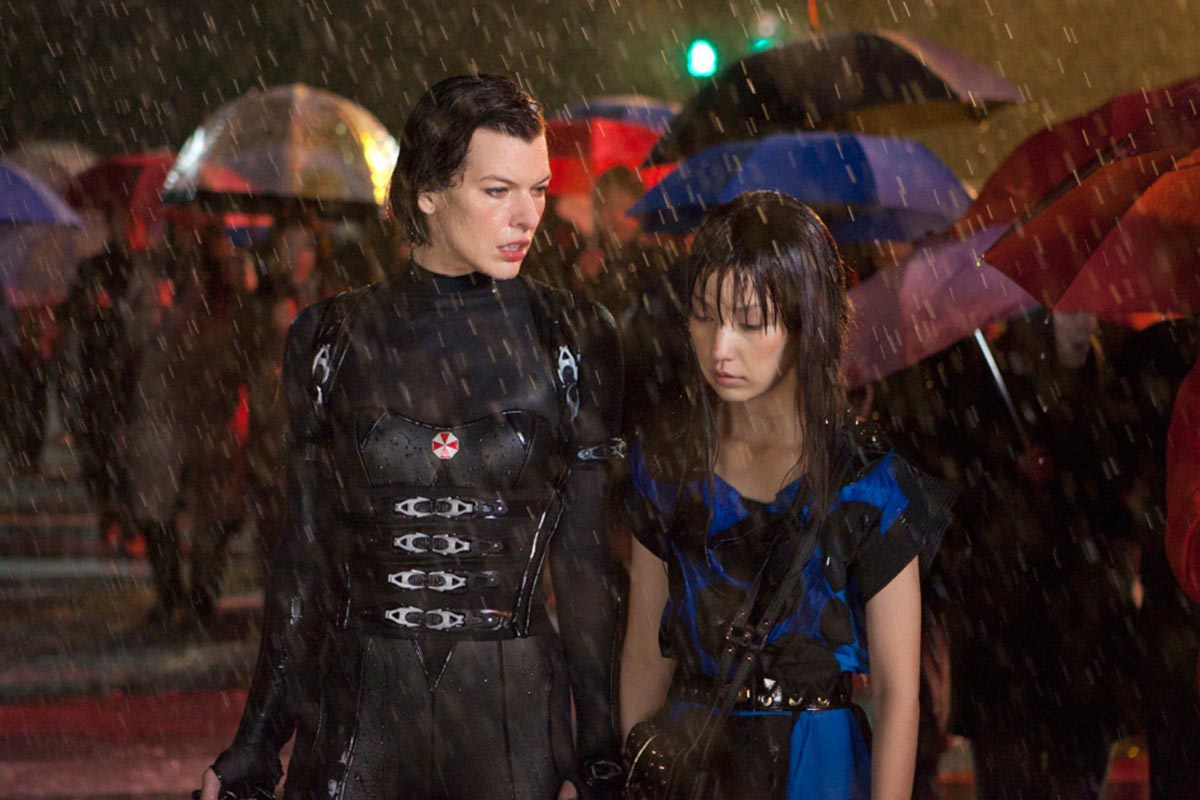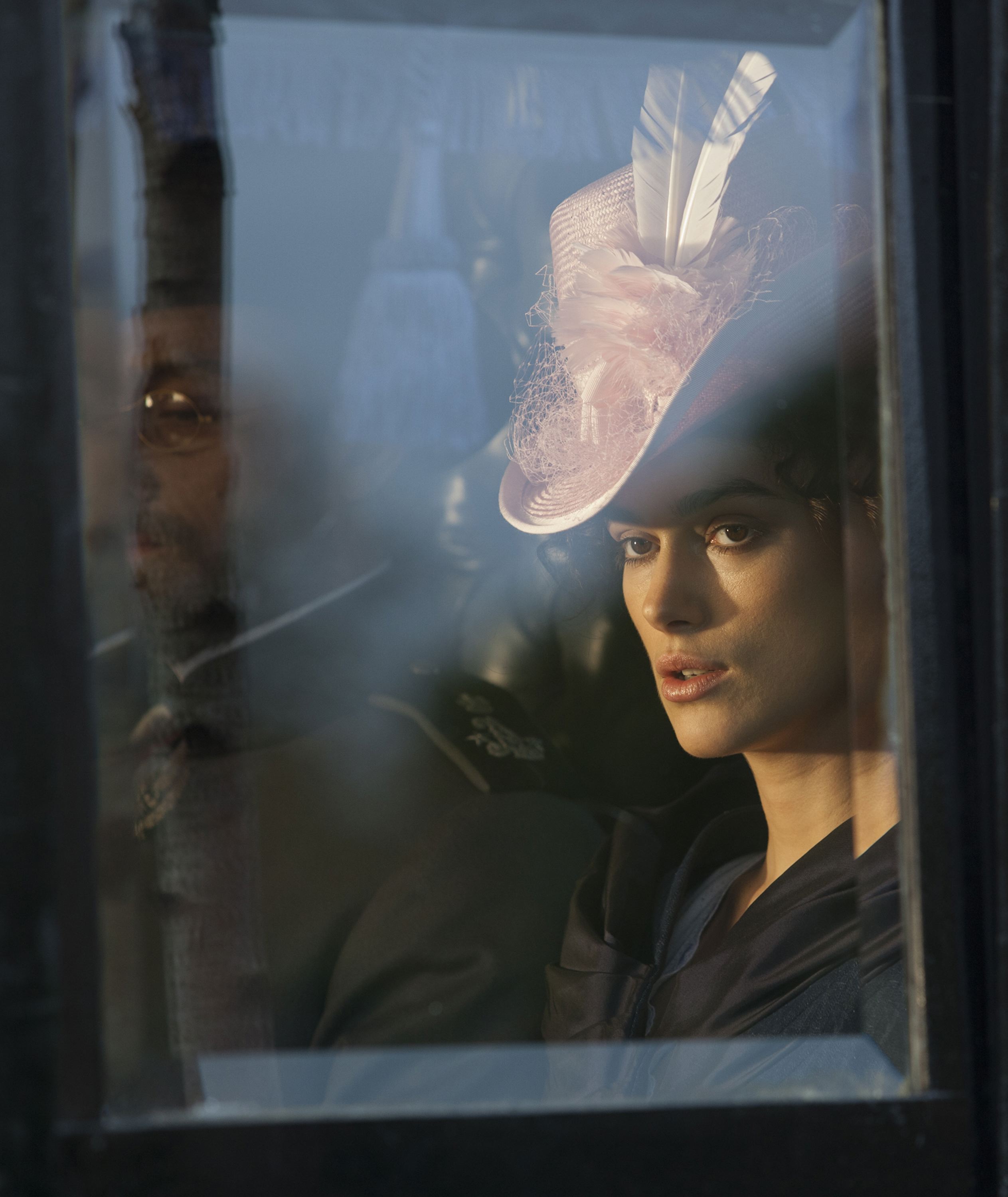The big movie event of September will be the anticipated latest from a certain filmmaker who signs his films with the surname Anderson and a pair of initials, a prodigious talent who burst onto the scene with a stylish entry in the mid-’90s crime-thriller wave and never left.
The master who I am referring to is, of course, not P.T. Anderson, but writer/director/producer Paul W.S. Anderson. The movie of the moment is Resident Evil: Retribution, which opens Friday, Sept. 14 at Lincoln Square and other theaters.
Since hitting the ground running with 1994’s Shopping, Anderson has established himself as a crackerjack director of swashbuckling/chop-socky/demolition derby/prison-break movies. Devoid of pretense and bloviation—cutting to the bone by contemporary standards, he has not yet made a film that has overstepped the two-hour mark—Anderson is a devoted practitioner of pulp for pulp’s sake. His zombies and aliens are not metaphorical stand-ins for anything; they are zombies and aliens. Beyond a distrust of overreaching private industry that carries through 1998’s Soldier, the Resident Evils, and 2008’s Death Race, Anderson’s films have no “message” referent to anything outside of their own self-imposed problems of visual storytelling. Anderson can barely be bothered with motivations or subtext, but give him a booby-trapped corridor, a hair’s-breadth escape, or a tactical assault, and he’s off to the races. His films are exactly what meets the eye, staple genre work of the sort that is usually written off—though if these staples are so easy to whip up, it’s worth wondering why so few people do them properly.
Like buildings and prostitutes, genre directors only become respectable with age. Dismissed even by the studios that profit from them, Mr. Anderson’s films do not tend to screen ahead of release for critics, preventing any serious present tense analysis of their visual schemata, and we’ll have to wait decades for any self-respecting rep house to stage a retrospective. It’s a shame, for these are movies that benefit immeasurably from being seen on the big screen; at home, one tends to notice niggling details like the rudimentary dialogue that’s a composite of tone-deaf comic relief and fourth-grade playground braggadocio (“I don’t think so!” heard in two films!), but seen in their proper aspect, Anderson’s films preeminently exhibit the panache that is variously called mise-en-scène, “film sense,” or “cool,” depending on age and education.
Shopping, Anderson’s directorial debut, stars Sadie Frost and a young Jude Law as joyriders doing doughnuts across the face of an abandoned, dystopian England. Full of warehouse clubs and Grebo undercuts, it’s so self-consciously of-the-moment as to seem impossibly dated today, so ’90s that it actually contains the line: “This is the ’90s. Sex isn’t safe anymore.” It is, thankfully, Anderson’s first and last attempt at developing characters—hereafter, this tendency is limited to giving one member of an ill-fated party a likable smile or establishing another as a loving parent, so to make their eventual exterminations more poignant.
Shopping does contain signposts pointing toward Anderson’s own future: Frost’s character tunes out actual underway car chases to play an Out Run–style racing game on a handheld device, and the film’s soundtrack is decked out with vintage electronica/industrial heaters. Fated to adapt video games while cutting to break beats, Anderson would become a filmmaker firmly planted in the digital age with 1995’s Mortal Kombat, a film with an arcade pedigree and a soundtrack that came as close as anything to breaking techno in the States. Based on a competitive fighting quarter-muncher whose principal attraction was its ultra-violent Fatalities, the best one can say of Mortal Kombat is that it is as good a film as anyone could make from such material while working around a PG-13 rating, generic Enter the Dragon premise, and contractual obligation to use the line “flawless victory.”
Deep house meets deep space in the opening credits of 1997’s Event Horizon, Anderson’s first fully realized picture, which establishes a pattern for works to come. A rescue ship arrives at an abandoned experimental starcraft that, returning from a black hole, has brought back a mysterious, malevolent force; the action is hereafter limited to its confines. Critic Dave Kehr, one of Anderson’s few respectable defenders, noted in The New York Times that the director was “a gifted creator of claustrophobic atmosphere”—and indeed Anderson adores leading unsuspecting ensembles down perilous studio-constructed rabbit holes where his prowling camera can slink along access tunnels, air shafts, and drain pipes: Resident Evil’s the Hive, the “Rats in a maze” underground temple in Alien vs. Predator (2004), the prisons in Death Race and Resident Evil: Afterlife (2010). Along with dimensional maps that keep us always aware of where his dramatis personae are within their dungeons, Anderson has a great weakness for overheard long shots that regard the action as a game board—the extreme example being the flight over a Risk-style map of a powder keg 17th-century Europe underneath the opening credits of The Three Musketeers (2011), a motif repeated on the marble floor of the chamber occupied by Christoph Waltz’s power-mad Cardinal Richelieu.
One suspects that Anderson would like to tell a story solely through images, and he almost did in Soldier, the nearest thing to an undiscovered masterpiece in his oeuvre. The nearly silent opening introduces Kurt Russell as a futuristic Spartan, a trained-from-the-cradle killing machine who, upon being rendered obsolete, is scrapped on a garbage planet where he becomes protector of its castaway residents. The script, which can’t be more than a dozen pages long, is from Blade Runner and Unforgiven screenwriter David Peoples—the first title is relevant in the sci-fi setting; the second in the subject of a violent man learning to redirect his ingrained violence to a worthy cause.
In the past decade, Anderson has continued to refine a rare attention to Aristotle’s classical unities with the lubricious tempo shifts of an ace DJ, riding his soundtracks while slipping in and out of slo-mo breaks. Matching a maximum genius in crisply delineated action to a maximum monosyllabic inanity in dialogue, he has adapted such vaunted sources as PlayStation, Roger Corman, and Alexandre Dumas, père, the last named with The Three Musketeers.
No less a personage than Quentin Tarantino included Musketeers in his Top 11 movies of 2011, for which he was promptly attacked by the legions of online 16th-wits who knee jerk condemn as “trollish” any opinion that doesn’t capitulate to consensus. In fact, Musketeers is ingenious in choreographing its vaulting, airborne action specifically to stereoscopic 3-D and the breadth of wide-screen—the aspect ratio that Anderson has exclusively favored since Alien vs. Predator. Although not an “actor’s director” in the generally understood sense, Anderson does excel in building set pieces for axiomatic, physical screen presences like his wife, the lithe Milla Jovovich, in Musketeers and the Resident Evils, Russell in Soldier, or Jason Statham, the Rod Taylor of our day, in Death Race. That film’s speedway splatter ends with the piece’s villain killed by her own bomb—a trick Anderson enjoyed enough to repeat in Resident Evil: Apocalypse—as Ian McShane addresses a smirky “I love this game!” to the camera. It’s a deeply silly aside, but the sentiment shows Anderson’s approach to filmmaking, and it takes a crippling cool complex not to find his enthusiasm infectious.








